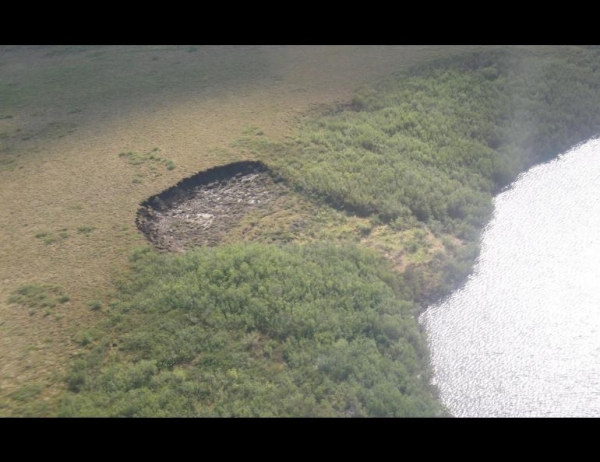Thawing Arctic hillsides release a significant amount of organic carbon that has been locked in frozen ground for thousands of years but which now can contribute to an already warming climate, according to new research.
The finding comes from the study of hillsides in a far north region of Russia, where the researchers also found a significant and rapid increase of collapsed hillsides. The collapses feature landslides that gradually expose more of the permafrost for thawing — and more carbon for release.
Global climate models don’t account for the once-frozen carbon set free by these collapsing hillsides. The researchers say that needs to change.
The findings were published July 15 in The Cryosphere, a journal of the European Geosciences Union. They are the first based on the use of satellite imagery to estimate carbon release from slumping Arctic hillsides.
Read more at University of Alaska Fairbanks
Image: This medium-sized thaw slump in Canada's Mackenzie River Delta is about 260 feet wide and with a headwall of about 10 to 15 feet. It formed closer to the lake, expanding upslope by many feet each summer. (Photo credit: Simon Zwieback)


